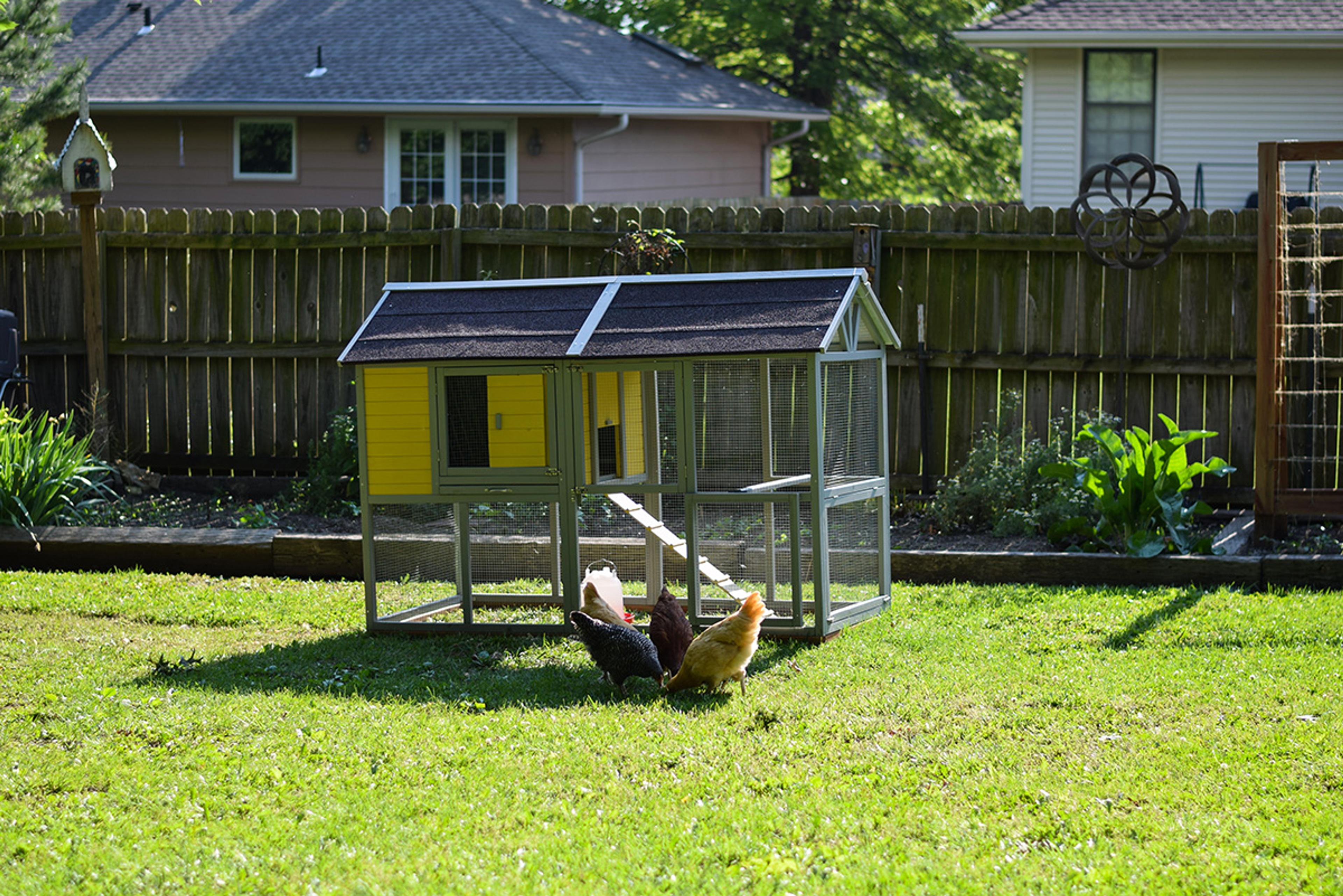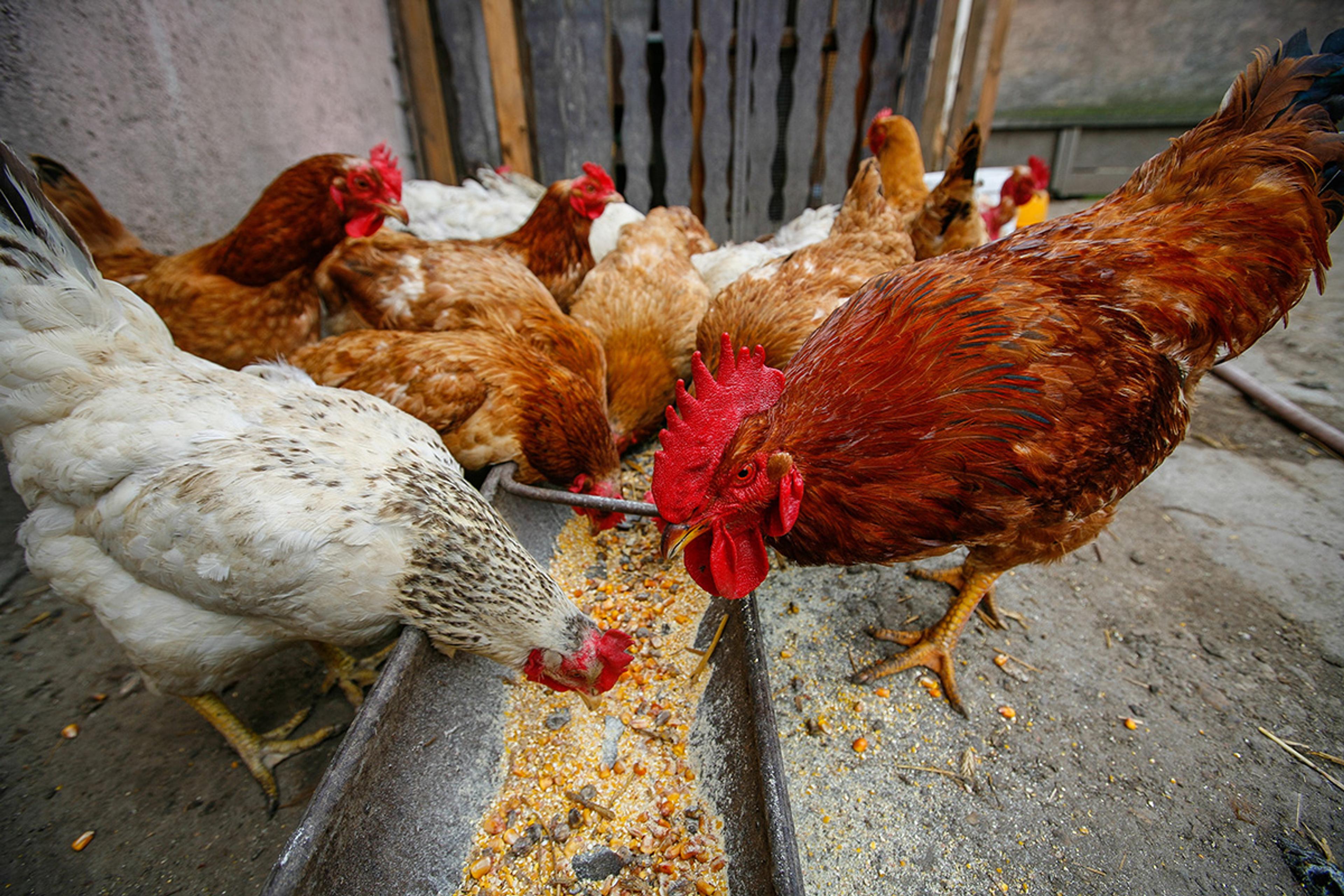
Farming
5 Tips to Make Your Backyard Chicken Ranch Spegg-tacular
Like many of you, Organic Valley is big on do it yourself (DIY). Three decades ago, we—together with lots of people who were food-frustrated by conventional agriculture— pulled off one of the greatest DIY projects in the history of American eating: organic food.
Today, we see food DIY-ers everywhere, especially behind the houses of all you urban, suburban, and ex-urbanites who keep backyard chickens. If you’re thinking about starting your own backyard chicken ranch or are already tending a flock, take a look at how a backyard henhouse scenario compares to family farmed eggs.
Our expert on family-farm-scale organic egg production is Joel Goede (pronounced “GAY-dee”), a long-time Organic Valley egg farmer from Genoa, Wisconsin. As for a backyard “expert,” you’re stuck with me. I’ve kept about three dozen laying hens in my family’s retrofitted 1940s milk house for many years, and I still learn something new every day I’m around these creatures.
But before we get started, why would we—a food company—give tips on raising backyard chickens? Well, we love hearing when people choose to grow all or a portion of their own food. Even though we sell food here at Organic Valley, self-sufficiency is such an important value to us and has been since we were founded over 30 years ago. We also know that not everyone has the desire or means to raise everything they eat. So if you’re getting eggs from your own backyard cluckers, we hope when you choose other foods for your family like dairy, cheese, butter, produce and meat, that you’ll choose Organic Valley and Organic Prairie. When you do, you’ll be supporting 2,000 certified organic farmers who share your desire to sustain an organic, resilient and responsible food system.

Joel Goede, Wisconsin Organic Valley egg farmer.
Getting Started
Chickens in a suburban neighborhood can be fun, but pesky, too. They will provide you with delicious eggs. They will be noisy, especially when laying eggs. As Mark Twain once put it, “Often a hen who has merely laid an egg cackles as if she laid an asteroid.” Chickens also like to roam around and scratch, peck, and dig for bugs, causing general mayhem among lawns, gardens, decorative flowers and shrubbery. They also poop, a lot, everywhere they go.
Before you start researching breeds or making Pinterest boards of cute coops, check with your local authorities to make sure your neighborhood allows chickens. Get the required permits, and follow the rules. It’s also a great idea to check in with your closest neighbors to let them in on your plans. Things will go better if the families around you know what you’re up to.
Tip #1: What breeds should I choose?
Joel Goede raises Bovans Brown hens because they are even-tempered, consistent egg layers of really great quality eggs. Organic Valley farmers typically choose Bovans Browns, Lohmann Browns and Highline Browns; if you want reliability and mellow chickens, you could choose these breeds as well. But as a hobbyist, you have options galore, from the Australorp and Golden Comet, to the Sussex and the good old Rhode Island Red, and many, many more breeds.
Joel advises that you do some research before you decide. Do you want lots of eggs? Colorful eggs? Big eggs, or small? Are you in a cold or warm climate? Once you can answer these questions, there are many excellent sources online where you can narrow down the varieties you want. Remember, there’s truth in the old saying, “Birds of a feather flock together.” If you choose to put different breeds in the same coop, he strongly recommends paying attention to the birds’ temperaments to make sure they will get along.
The Investment
Your backyard chicken hobby won’t require a large investment. Since most cities limit the number of hens you can keep (and most prohibit rabble-rousing roosters altogether), start-up costs are low. Plan on anywhere from $100 to $500, depending mostly on the quality and roominess of your henhouse and the size of your run (fenced-in area connected to the henhouse).
Believe it or not, you can order chicks through the mail in small quantities, at about $3.50 per chirper. Or you may be able to order them through your local hardware or farm implement store. Once you receive your chicks, you’ll be surrogate mother hen and will need to keep them warm for about four weeks. A “brooding box” can be as simple as a large cardboard box or storage bin with a securely suspended, Underwriters Laboratories (UL) approved heat lamp to provide enough warmth. A small tray for chick feed, another for water, and wood shavings as bedding, and you’re in business. Chicks just want a safe, warm nest where they can chirp and run and nap and drink and eat and play and nap and poop and nap and be stinking cute 24/7.
They’ll start laying eggs around four and a half months. The first year will be the most productive, but backyard chickens will lay eggs for a good four to five years, just in ever-decreasing quantities. Each year, they’ll “molt”—drop and re-grow their feathers, as all birds do every year. During the molt, chickens stop laying eggs for three months, reserving their energy for growing new feathers. (Maybe during these three months you’ll consider Organic Valley eggs?)
Tip #2: How do chickens keep their house clean?
At the backyard operation, you are the maid. Henhouse-keeping is very important to keeping your chickens healthy. Keep a large supply of straw or wood chip bedding nearby that you can spread throughout your henhouse. This will make weekly clean-up a snap; just scoop it all out and spread some more. A lot like changing your cat’s litter box. (At least you don’t have to use a tractor to clean the coop like Joel does!)

The Henhouse and Run
There’s a reason for the old saying “when the chickens come home to roost,” because they do, every single evening (if you let them roam) after a long day of bug-seeking adventures. Hens “home,” meaning they mentally attach themselves to a specific safe place where they always spend the night. In your backyard, you have to provide the safe place.
Chances are, you won’t be allowed to let your chickens out to roam the neighborhood, so think in terms of comfort in the henhouse. You can build your own or choose from mail-order models online. A simple Google search will make your head spin with ideas for chicken quarters and nesting boxes where your chickens will lay their eggs.
Tip #3: How much space to chickens need?
Your henhouse does not need to be huge. Organic Valley farmers provide 1.5 square feet indoors and 5 square feet outdoors, and this reflects how birds like to stay close together. In fact, they can get nervous when they have too much space. As a backyard bird rancher, your yard size and city regulations will dictate how many birds you’re able to have. As a general guide, plan on 3 square feet per bird in the henhouse, which would be about ten birds in a 4-by-8-foot space. Your outdoor run can allow as much area as you like, but no less than 5 square feet per bird.
You will also want to install a fence around your coop so that your flock can “pasture” in the backyard. A chicken wire fence will keep your birds from roaming while also helping keep out unwanted visitors, like raccoons and the greatest suburban threat of all, loose dogs. Even the gentlest dogs can’t resist chasing chickens, so your fence should be strong enough to keep out the pooches, but mobile enough that you can move it around to give your birds fresh grass and allow the previous area to recover. Consider topping your run with a mesh or wire fabric to keep chickens in and flying predators out. Chickens will generally stay on the ground and not “fly the coop,” but they are able to fly up and over fences up to 8 feet tall.
Tip #4: What do chickens like to do outside?
Just like you, chickens love spending time in the great outdoors. Unlike you, they spend most of their time looking for tasty bugs to eat, which involves a lot of scratching and digging at the grassy ground. When that gets old, they like to dig deeper in soft soil and take dust baths, which is good for their skin and feathers. Chickens also love to run around and chase each other. Joel provides a large area that he fences in with a six-foot-high chicken fence, to keep out the skunks and opossums. As an Organic Valley farmer, he makes sure they have plenty of shade—which he provides with suspended opaque mesh—plenty of fresh water, and lots of greenery for his birds to pick through and nibble to their hearts’ content.
The Feed
Joel grows his own organic feed for his chickens. When one has a handy tractor and hundreds of acres of farm fields, this is much more of an option. You, however, will likely need to order it. But no worries; these days you can purchase packaged chicken feed nearly everywhere, most often at hardware stores, or from online sources. Be sure to get feed created specifically for laying hens because they need proper nutrition to produce proper eggs and stay healthy. It’s very important that you give your birds enough food to keep them healthy and laying strong. A good rule is at least 1/3 pound of high-quality feed per bird every day.
And just like kids, chickens love treats. You’ll have a blast tossing them table scraps to discover the odd things they really love (don’t worry, they’ll only eat what they want). Hint: My girls go nutso for watermelon and pasta.

Tip #5: How do I keep chickens cozy through the winter?
Make sure you select breeds that are right for your climate. You’ll find that most modern chicken breeds are hardy enough to cope with cold weather if they have adequate food, thick bedding, and a non-drafty henhouse where they are out of the wind and damp. With wide perches, they will fluff out their outer feathers to trap warmth in their downy feathers underneath. They will alternate standing on one leg, while the other is tucked up into their warmth.
You may not need to heat your backyard coop at all, depending on your location. In Wisconsin, where winter means extreme cold, Joel keeps his large barns heated to about 55 degrees Fahrenheit. If you want to provide heat, a UL-approved heat lamp will be enough in most cases. Make sure it’s securely installed and covered with a wire shield; chickens flap around a lot and can break bulbs.

And, of Course, the Eggs
At the end of the day, the egg is what we’re in it for. You will notice immediately that the eggs you get from your flock are different. Bright orange yolks and flavorful throughout, there is no going back once you’ve gotten used to fresh eggs. Joel says that when your flock is laying to its fullest, expect to get one egg every 32 hours from each chicken, or about five per week per layer. If you want to maintain a steady supply of eggs, you’ll have to ensure that the chickens get 16 hours of light every day. A simple light on a timer can resolve this issue, especially if you are in a northern latitude where winter days are short.
Once you have a year or two under your belt working closely with these wonderful creatures, you will come to see how important it is to Organic Valley egg farmers that the eggs they gather come from happy, healthy hens.
Happy chicken farming!
Related Articles
- Tags:
- organic & sustainable living,
- DIY
















